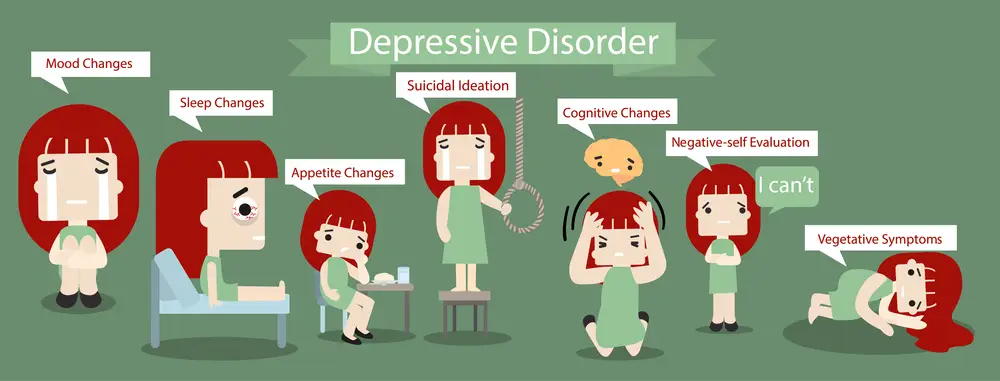An Introduction To Different Types Of Ketamine

Ketamine is a medication that has been used for decades as an anesthetic. More recently, it has been found to be an effective treatment for depression. In fact, ketamine is now considered one of the most promising medications for treating depression, especially when other treatments have failed.
What exactly is ketamine, and are there different types? Read on to learn more
Dissociative Drugs
Ketamine is a medication that belongs to a class of drugs known as Dissociative drugs that cause dissociation, which is a disconnection from reality. These classes of drugs can produce an “out of body” experience and cause hallucinations. Other examples of dissociative drugs include phencyclidine (PCP) and dextromethorphan (DXM). This class of drugs are considered to be NMDA receptor antagonists.


Dissociative drugs like ketamine have a long history of abuse due to their hallucinogenic effects. Ketamine is used legitimately as a medical treatment for a variety of health conditions and as well as an anesthetic commonly used in surgeries. The FDA approved it for use as an anesthetic for diagnostic and surgical procedures in humans and animals.
It has been gaining popularity as a treatment for depression and chronic pain disorders. Ketamine has also been effective in treating other various mental health disorders like migraines, PTSD, OCD, Addiction, Bipolar Disorder and chronic pain conditions like fibromyalgia.
Depression Treatment With Ketamine
Depression is a severe medical condition that affects millions of people worldwide. According to the World Health Organization, depression is the leading cause of disability worldwide. Ketamine is an effective treatment for depression and is typically used when other treatments have failed. The drug acts swiftly and reduces depressive symptoms in just six hours.

Ketamine works by increasing glutamate neurotransmission in the brain, which leads to changes in brain activity and neurotransmission. Glutamate is a key neurotransmitter involved in synaptic plasticity, which is necessary for learning and memory. Changes in glutamate transmission have been implicated in the development of depression
Ketamine has been shown to be effective in treating major depressive disorder (MDD), bipolar disorder, post-traumatic stress disorder (PTSD), and Obsessive Compulsive Disorder (OCD). Ketamine has also been studied as a treatment for suicidal ideation and self-harm behaviors and the results have been compelling.
Three types of ketamine explained

R-ketamine (arketamine) is usually administered intravenously through IV infusions. Racemic mixtures contain equal parts of the S enantiomer and R enantiomer are standard anesthesia used on animals and humans. The effects of S (+) enantiomer are more potent than those of R (-) enantiomer, making it the more desirable option for medical use since it can be administered at lower doses. Racemic ketamine seems to be more efficacious than esketamine in treating depression, according to one study.
R, S-ketamine is the generic form of racemic ketamine sold under the name Ketalar (ketamine hydrochloride). It’s curated in powder form by pharmaceutical companies in labs with an equal 50/50 mixture of R and S enantiomers. Its the oldest form of ketamine produced and used for over five decades as anesthesia and pain relief during medical procedures.
R and S ketamine bind in the brain and body and are virtually the same, yet they are considered different drugs. It comes in various forms, such as oral, sublingual, nasal, rectal, subcutaneous, and intramuscular injections. Recreational ketamine is usually a racemic form that comes in a crystalline powder and is usually snorted.
S-ketamine or Esketamines (Spravato) is a nasal spray that contains esketamines the S enantiomer of ketamine and was approved in 2019 by the FDA for treatment-resistant depression (depression that doesn’t improve with antidepressant medications). In 2020, the FDA approved Spravato for major depressive disorder (MDD) with acute suicidal ideation or behavior. It’s manufactured by Janssen Pharmaceuticals, Inc, a subsidiary of Johnson & Johnson (JNJ).
It’s important to note that S-ketamine is more analgesic and anesthetic than R-ketamine. S-ketamine may increase glutamate levels, allowing neurotransmitters to bind to alpha-amino-3-hydroxy-5-methyl-4-isoxazole propionic acid (AMPA) receptors, improving neuron communication in the brain. Some of the resulting benefits are mood stabilization, improved cognition, and thought processes.

If you are living with depression, you are not alone. Millions of people worldwide suffer from this severe condition. Fortunately, there are treatments available that can help you manage your symptoms and improve your quality of life. Ketamine treatments have repeatedly been proven safe and effective in treating depression, especially when other treatments have failed.
There are different types of ketamine available, so talk to your doctor about which would be best for you. With proper treatment, you can begin to feel like yourself again
Article Reviewed By

Richard Koffler, MD
NPI Number- 1467557264
- Dr. Koffler is a Physiatrist, specializing in Physical Medicine & Rehabilitation.
- Graduated from the Sackler School of Medicine at Tel Aviv University in 1993 Dr. Koffler completed a one-year internship in internal medicine at Roosevelt Hospital in New York City.
- Residency in Physical Medicine and Rehabilitation at the Rusk Institute at NYU Medical Center in New York City. Board certified in 1998.
- Trained in acupuncture at Helms Medical Institute at UCLA His medical practice incorporates proven conventional western medicine integrating eastern alternative practices.
- Medical Director of several medical clinics in NYC, Stamford CT, and Miami Beach, FL.
Medical Disclaimer
The information on this site is not intended or implied to be a substitute for professional medical advice, diagnosis, or treatment. All content, including text, graphics, images, and information, contained on or available through this website is for general information purposes only. Ketamine DRS makes no representation and assumes no responsibility for the accuracy of the information contained on or available through this website, and such information is subject to change without notice. You are encouraged to confirm any information obtained from or through this website with other sources and review all information regarding any medical condition or treatment with your physician.
NEVER DISREGARD PROFESSIONAL MEDICAL ADVICE OR DELAY SEEKING MEDICAL TREATMENT BECAUSE OF SOMETHING YOU HAVE READ ON OR ACCESSED THROUGH THIS WEBSITE.

